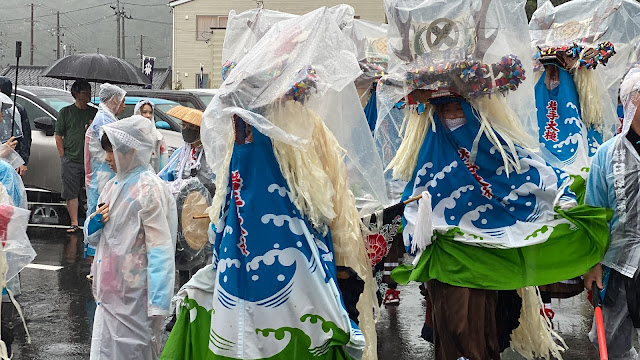Otsuchi Festival: Mikoshi transferral Procession at Kozuchi Shrine (September 22, 2024)
YouTube Chapter (translated to English from Japanese)
https://youtu.be/HJ4H39YClvs?si=3BXZp_8AFt9cj0ST
0:00 1. Mikoshi Transferral Procession Begins (Kozuchi Shrine)
12:45 2. Jonai Daikagura (Marutani)
23:37 3. Matsu-no-shita Daikagura & Kamiyoshi shishi Odori ( Suehiro reconstruction Housing)
35:57 4. Mukaigawara Toramai (Mukaigawara "Tiger Dance" Hall)
45:41 Mikoshi Procession (Oshachi Park)
50:59 6. Usuzawa shishi Odori (Otsuchi Town Hall)
1:07:32 10. Jonai Daikagura, Mikoshi Procession & Rikuchu Benten Toramai (Kozuchi River)
1:33:58 Mikoshi Entering back the Shrine (Kozuchi Shrine)
1:50:00 Usuzawa shishi Odori (Kozuchi Shrine)
From September 20 to 22, 2024, the "Otsuchi Festival" was held, a joint celebration of the annual festivals of Otsuchi Inari Shrine and Kozuchi Shrine in Otsuchi Town, Iwate Prefecture.
I attended the festival on September 22 to witness the Kozuchi Shrine’s annual mikoshi (portable shrine) transferral procession. Last year, I was invited by members of the Usuzawa Deer Dance group(臼澤鹿子踊) to attend, but I couldn’t make it. This year, I went without any specific preparations beyond checking the official website.
Rainy Day, No matter
The day began with rain, and I debated whether the festival would even proceed as I left Ishinomaki. However, upon driving along the Sanriku Expressway, I arrived to find a lively scene: locals, shrine staff, and traditional performance groups braving the rain in raincoats. The energy was palpable.
Clad in my own rain gear, I joined the spectators. When I asked a member of the Usuzawa Deer Dance group about the rain, they replied, "Unless there’s a warning or disaster, the festival won’t be canceled." Their determination was impressive.
The Unique Soundscape of a Festival
The air was filled with the overlapping sounds of various traditional performances, creating a unique harmony and energy. It was incredible to witness the blending of different rhythms and melodies in real time.
Having seen some of these groups at the Otsuchi Performing Arts Festival (Salmon Festival) in June, I noticed their energy levels were even higher at this event. The performers seemed to embrace the rain, almost as if it enhanced their passion. Of course, the rain also presented challenges, such as protecting instruments and costumes.
The Mikoshi and Tradition
Two mikoshi were paraded through the town. Initially, I thought one represented Yamato Takeru and the other a deity, but I learned that one mikoshi was dedicated to Kannon (the Bodhisattva of Compassion), a remnant of the syncretism between Shinto and Buddhism. This particular mikoshi featured purple ropes and the symbol.
Filming with my iPhone 11 Pro, I relied on its waterproof capabilities. However, water affected the microphone partway through, causing some anxiety. Thankfully, drying it out with tissue and natural air resolved the issue.
Following the Procession
The mikoshi transferral procession included performances by various traditional arts groups, who performed at stops along the route. Despite my early enthusiasm, the combination of rain and an early morning start took its toll, and I ended up napping in my car during a lunch break. Unfortunately, this caused me to miss part of the performances.
I managed to catch up for the performances at the Kozuchi River and the mikoshi’s final return to the shrine. Due to the river’s high water levels from continuous rain, the mikoshi couldn’t cross but was carried through a ritual at the riverbank instead.
A Memorable Finale
At the shrine, the carriers gave their all during the mikoshi’s final entry. This was followed by Usuzawa Deer Dance, grand kagura performances, and a mochi-throwing ceremony. From start to finish, the festival was extraordinary.
I can’t wait to attend again—next time, I hope to witness the mikoshi crossing the river.
------
tags:
Diary, Japanese folklore, Japanese Folk performing art, YouTube
Original article(Japanese)
https://note.com/coupieyukki/n/n4bbbf906604a











Comments
Post a Comment